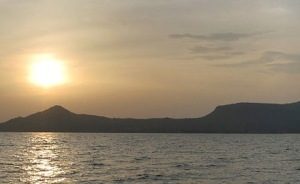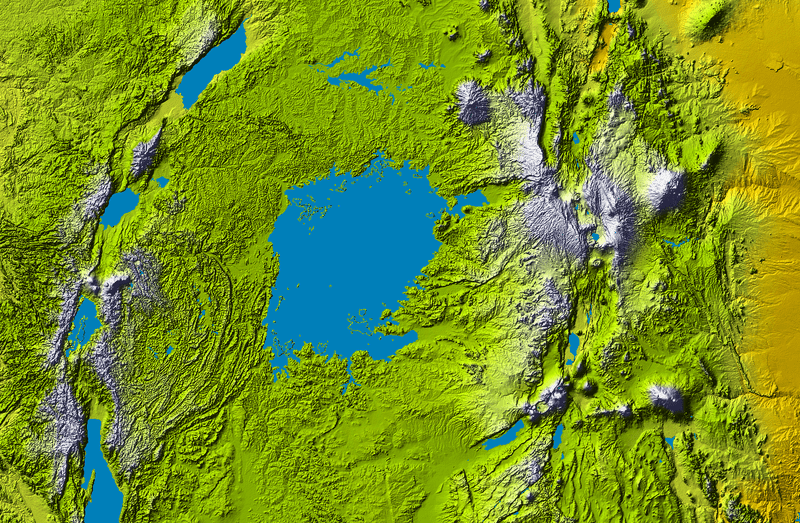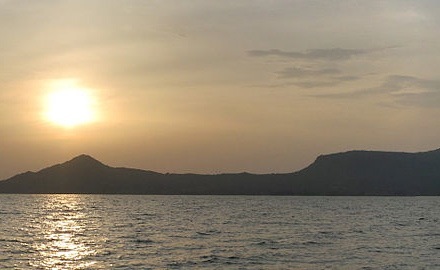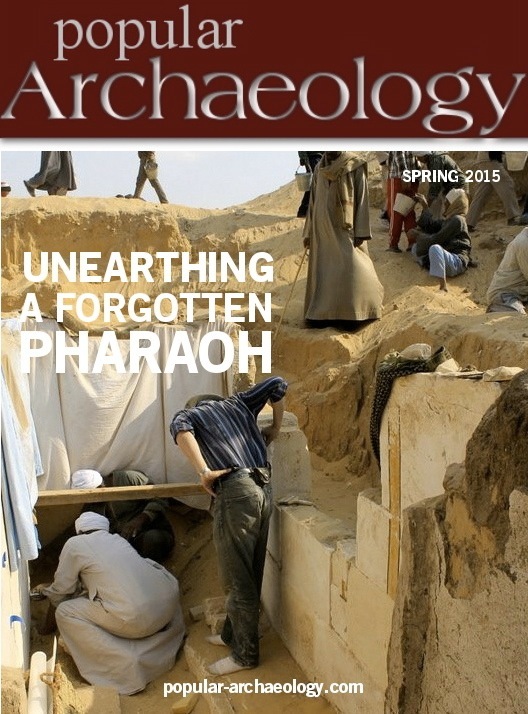
Research in genetics and across a variety of archaeological sites in Africa and beyond has shown that anatomically modern humans (AMH) dispersed between regions within and also out of Africa from 70,000 to 35,000 years ago. Paleoanthropologists have long suggested that environmental changes have played a key role in this process. However, a clear understanding of the complexity and how this took place has been lacking due to the deficiency of archaeological evidence in association with paleoenvironmental data.
In a recent study conducted by Nicole Garrett of the University of Minnesota and colleagues, researchers have revealed additional information by applying stable isotope analysis of paleosols and fauna remains associated with Middle Stone Age (MSA) archaeological sites on Rusinga and Mfangano islands in Lake Victoria in East Africa.
Along with bifacial points and Levallois flakes and cores typically identified with the presence of AMH, the sites contained the remains of ancient fauna long extinct, including mammals that inhabit wetland/riverine-type environments, as well as mammals that lived on the dry, open grasslands of the African savanna. Some of the fossil remains featured cut marks likely created by stone tools.
“The Pleistocene faunas from Rusinga and Mfangano contain the largest number of extinct species of any Pleistocene site in East Africa during the last 400,000 years,” wrote the study authors in the detailed research report, published in the Journal of Human Evolution.*
Most telling, however, was the specific mix of fauna found in association with the human lithic artifact sites. Along with taxa that lived in wet environments, such as Hippopotamus, they also found evidence of ungulates related to gazelles, widebeest and zebra, mammals that thrived primarily in dry, open grassland environments. Results of their analysis suggested a period when the climate had become drier, even drier than today, with the expansion of the savanna open grasslands, while leaving wetter, woodland refugia for humans and other mammals around critical riverine or lake areas.
“As the expanse of Lake Victoria is largely rainfall dependent, this and other lines of evidence imply a substantial reduction [anciently] in water level, likely transforming Rusinga and Mfangano into topographic highpoints on a grassland landscape, which would have supported more wooded habitats in an otherwise rich open grassland ecosystem,” wrote the authors.* “The association of stone tools with the paleosols and fossils sampled here suggest that, in some cases, humans persisted during intervals of drier conditions with expanded grassland cover rather than migrating into wetter habitats. They did this by exploiting locally closed and well-watered habitats within the larger grassland communities.”*
______________________________________
 Lake Victoria expanded and contracted, and even dried completely up at times, with climate fluctuations throughout geologic periods. Wikimedia Commons
Lake Victoria expanded and contracted, and even dried completely up at times, with climate fluctuations throughout geologic periods. Wikimedia Commons
______________________________________
 View of Rusinga island today. Küchenkraut, Wikimedia Commons
View of Rusinga island today. Küchenkraut, Wikimedia Commons
______________________________________
The researchers estimate that the layers at the sites that contain the artifacts and fossils range in age between 100,000 and 45,000 years ago, containing the critical time period when early modern humans were dispersing between equatorial East Africa and Central Africa, as well as dispersing out of Africa into the rest of the world.
The detailed report has been published as an article in press in the online version of the Journal of Human Evolution.
___________________________________________________
*Garrett, N.D., et al., Stable isotope paleoecology of Late Pleistocene Middle Stone Age humans from the Lake Victoria basin, Kenya, Journal of Human Evolution (2014), http://dx.doi.org/10.1016/j.jhevol.2014.10.005
___________________________________________________
 You can read our more in-depth articles about new discoveries and developments in archaeology and anthropology with a premium subscription to Popular Archaeology Magazine. Find out what Popular Archaeology Magazine is all about.
You can read our more in-depth articles about new discoveries and developments in archaeology and anthropology with a premium subscription to Popular Archaeology Magazine. Find out what Popular Archaeology Magazine is all about.
In addition, the latest Popular Archaeology ebook is now available.
______________________________________________
Travel and learn with Far Horizons.
____________________________________________
 Popular Archaeology’s annual Discovery Edition eBook is a selection of the best stories published in Popular Archaeology Magazine in past issues, with an emphasis on some of the most significant, groundbreaking, or fascinating discoveries in the fields of archaeology and paleoanthropology and related fields. At least some of the articles have been updated or revised specifically for the Discovery edition. We can confidently say that there is no other single issue of an archaeology-related magazine, paper print or online, that contains as much major feature article content as this one. The latest issue, volume 2, has just been released. Go to the Discovery edition page for more information.
Popular Archaeology’s annual Discovery Edition eBook is a selection of the best stories published in Popular Archaeology Magazine in past issues, with an emphasis on some of the most significant, groundbreaking, or fascinating discoveries in the fields of archaeology and paleoanthropology and related fields. At least some of the articles have been updated or revised specifically for the Discovery edition. We can confidently say that there is no other single issue of an archaeology-related magazine, paper print or online, that contains as much major feature article content as this one. The latest issue, volume 2, has just been released. Go to the Discovery edition page for more information.






